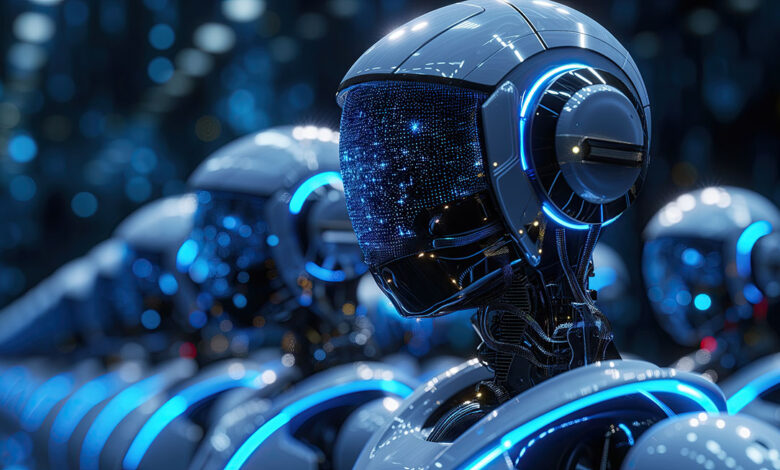Why teams need a strategy for responding to AI-driven threats

In the first part of this series, we explored the emerging cyber threats driven by artificial intelligence (AI), including automated phishing attacks, AI-powered malware, deepfake technology, AI-driven reconnaissance, and autonomous DDoS attacks.
These threats are not just speculative, they are actively shaping the cybersecurity landscape. In this second part, we will discuss how security teams can effectively respond to these AI-driven threats and what strategies and technologies teams will need to protect their organizations.
Security teams must adopt equally advanced strategies to counter the sophisticated nature of AI-driven threats. Here are six areas where security teams should focus their efforts:
Just as threat actors use AI to enhance cyberattacks, teams can also employ AI to bolster cybersecurity defenses. AI-driven security systems can analyze vast amounts of data in real-time, identifying anomalies and potential threats with greater accuracy than traditional methods. For example, machine learning algorithms can detect unusual network traffic patterns that may indicate a DDoS attack or recognize the subtle signs of a phishing attempt by analyzing email metadata and content.
Teams can also use AI for proactive threat hunting and incident response. Automated systems can continuously monitor networks, identify suspicious activities, and respond to threats faster than human analysts. By integrating AI into their cybersecurity and threat intelligence infrastructure, organizations can stay ahead of attackers who use similar technologies.
- Enhance threat intelligence.
AI can significantly enhance threat intelligence by sifting through enormous datasets to uncover trends and patterns that may indicate emerging threats. For instance, AI can analyze data from dark web forums, social media, and other sources to identify new attack vectors and tactics being discussed by cybercriminals.
Security teams should invest in AI-powered threat intelligence platforms that deliver real-time updates and predictive analytics. These platforms can help organizations anticipate and prepare for new threats before they materialize, allowing for a more proactive approach to cybersecurity. However, it’s important to have trained analysts on staff, as AI can augment human analysis, but it’s not a replacement. Skilled analysts are essential for interpreting AI-generated insights, making strategic decisions, and understanding the broader context that AI alone cannot offer.
- Improve user awareness and training.
Despite advancements in technology, human error remains one of the most significant vulnerabilities in cybersecurity. AI-driven phishing attacks exploit this weakness by creating highly-convincing fraudulent communications. To mitigate this risk, organizations must invest in comprehensive user awareness and training programs.
Teams can use AI to develop personalized training modules that simulate real-world phishing attacks. By exposing employees to these simulated threats, organizations can improve their ability to recognize and respond to phishing attempts. Continuous training and reinforcement are crucial, as attackers constantly refine their techniques.
- Develop robust authentication mechanisms.
As AI-driven deepfake technology becomes more sophisticated, traditional authentication methods such as passwords and security questions are increasingly vulnerable. To address this, organizations should adopt multi-factor authentication (MFA) and biometric authentication methods.
AI can enhance these authentication mechanisms by analyzing behavioral biometrics, such as typing patterns and mouse movements, to verify user identities. Additionally, AI can monitor login attempts for signs of fraudulent activity, such as unusual geographic locations or times, and trigger additional verification steps when anomalies are detected.
- Secure AI models and data.
With the rise of AI, it’s become critical to protect the integrity of AI models and the data they rely on. Attackers may attempt to steal or manipulate AI model weights and training data, compromising their effectiveness and potentially causing significant damage.
Organizations must implement robust security measures to safeguard their AI assets. This includes encrypting data at rest and in transit, employing access controls, and regularly auditing AI models for vulnerabilities. Additionally, developing strategies to detect and respond to adversarial attacks on AI models is essential for maintaining their reliability.
- Collaborate on a global scale.
We face a global threat landscape – and so must be our response. The industry will need to have international cooperation to address AI-driven cyber threats effectively. Governments, private sector organizations, and academic institutions must work together to share threat intelligence, develop best practices, and establish standards for AI security.
Initiatives such as information sharing and analysis centers (ISACs) and public-private partnerships can encourage such collaboration. By pooling resources and knowledge, the global cybersecurity community can better defend against sophisticated and evolving threats.
The future of cybersecurity in the age of AI requires a multifaceted approach that leverages AI for defense, enhances threat intelligence, improves user training, secures AI assets, and fosters global collaboration. As we move forward with AI, it’s imperative to remain vigilant, proactive, and ethical in our pursuit of technological advancement. By doing so, we can harness the potential of AI while protecting against its inherent risks, ensuring a secure and prosperous digital future.
Callie Guenther, senior manager of threat research, Critical Start



